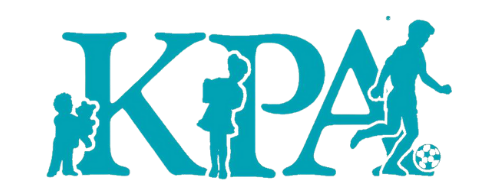The Importance of Reading with Your Child
It has been about a year since I last blogged for KPA. At that time, I was expecting my first child. Now, I have a 10 month old daughter! I could probably devote this entire blog to how time goes by so much more quickly after becoming a parent, but all of you probably already know that!
Instead, I’ll mention that I’ve recently often thought to myself, “What should I be doing with my child? What types of activities should I be exposing her to for her learning and development?” There are numerous answers to these questions but a fantastic answer is always going to be: read to your child, there are so many reasons why!
- It will actually help with vocabulary later. It allows you as a parent to talk with your children and probably use words you would not use in daily conversation (children’s books use such fun language)! The more language and words children hear before the age of 3, the better they tend to do in school with reading. A larger vocabulary helps children with schoolwork because they spend less time understanding what they’re reading and less decoding the words they are reading. This means even reading comprehension is better.
- Reading to your child often opens new doors for conversation and play. If you are reading fiction, it will always lead to more conversation and questions. It’s great for your child to be imaginative and creative.
- It gives children a model on how to do kindergarten foundation reading concepts. They will already know how books work, the structure, how to read left-to-right, top-to-bottom, and even how to turn pages.
- You can model good reading to your child. You will model fluent and expressive reading so that your child will pick up on pauses, the rise and fall of your voice in speaking, and patterns of rhythm and sound.
- It is so much fun! What better way to interact with your child and bond.
A few quick tips for reading to your child based on age:
Before 6 months:
Think about reading more as exploring the concept of books. Read sturdy books; allow your child to chew on them. You can even read magazines or books you are reading yourself because they still get the benefit of hearing the sounds of language.
6-12 Months:
Talk about pictures. Encourage pointing to things on the pages. Let your baby turn the pages. If your baby gets bored or distracted, don’t stress about not finishing the book.
12-18 months:
Use dramatic reading with different voices and big expressions and gestures.
18 months to 3 years:
- Help your child become the storyteller. Each time you read the same book, do less reading yourself, and let your child talk more. You can point and ask questions. Make it interactive!
- Read alphabet books and rhymes so your child gets to hear the sounds of different letters.
- Sound out words, syllable by syllable. This can help your child link letters and their sounds which can help decode words later and help with spelling.
4-5 years:
- Have your child read aloud what they know. Point out words you know that they know which will help with word recognition and comprehension.
- Ask questions about the story while you read. Reread parts your child maybe did not understand. Ask questions about the plot of the story. Research shows how important conversation during reading is.
I hope I have given you a new zest for reading with your child. Please remember how important it is to read together every day, even if it is just for 5-10 minutes. The benefits are numerous!
A very special thanks to my sister (also a wonderful aunt to my daughter), who helped me with my post. She has been a first grade teacher for 8 years. Her passion for reading and early education amazes me daily!
